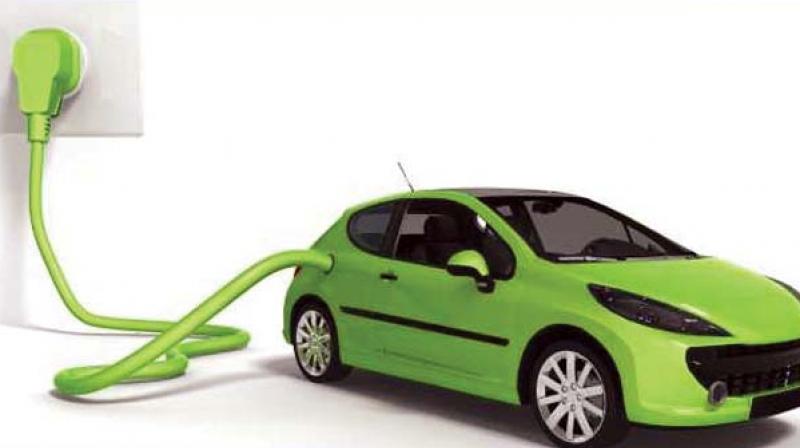We need space! Cabs, autos usurp Bengaluru roads

Curbing haphazard parking, especially on busy roads, near railway stations and bus stands is a challenge that the government has ignored for long. It’s a failure across various administrative limbs, from the transport department to the traffic police and BBMP. The profusion of cabs and autos adding to the melee has only made it worse. “Streamlining vehicle movement and providing adequate parking facilities that are accessible to the public is a requirement in a city like Bengaluru,” feels H.S. Sudhira, urban researcher, Gubbi Labs.
Primarily, taxis and app-based cabs must be streamlined, like they are at Kempegowda International Airport, says Sudhira. “Although it is difficult to put an end to registration or regulation of taxis or private vehicles, the transport department and traffic cops must issue special permits to enter the Central Business District and areas like Majestic, Market, Corporation area, Avenue Road, where public transport and Namma Metro services are adequate,” he says. “A specified fee can be levied for vehicles entering such areas. Further, an impact fee can be levied for those vehicles and that fee should be exorbitant. Only then we curb private vehicles and taxis from entering such areas,” he adds.
The BBMP must aim to bring in a parking policy which is interconnected with transport and parking issues. Private land users must be encouraged and incentivised to allow their properties situated in busy areas to be rented out for parking. With this, the owner of the property can either enjoy free parking at all parking lots or can be given additional Floor Area Ratio (FAR) if his property is developed into parking facility for a certain time frame, he suggested.
Parking lots like the one at J.C. Road should have been developed on a larger scale. The Central government did issue funds to states under the Jawaharlal Nehru National Urban Renewal Mission (JNNURM) for various infrastructure facilities and this plan made it mandatory to provide parking services as well. Sudhira laments that successive governments have since shifted their focus.
Transport Transit Management Centres, which are under the transport department, must be utilised to enhance taxi services and infrastructure to such vehicles.
Sunitha, a housewife says, auto rickshaws, taxis and app-based vehicles have become a menace. Most of the time, they park in residential areas, blocking the free movement of vehicles and also posing a security threat at residential locations.
“What business do these drivers have entering residential neighbourhoods unless their services are called for?” she demands. “The government must provide parking facilities at affordable rates.”
Another urban expert, George Kuruvilla, feels that mass transport system should be built up if people are to leave their vehicles at home or stop hiring taxis. “The mass transport system should be made affordable and convenient,” he says, adding, “Taxis and auto rickshaws, which are primary modes which are the modes of transport, have become a menace on city roads and are a nuisance to other motorists. Taxis parked haphazardly on the roads and at residential areas are the cause for major congestion on the road resulting in inconvenience to commuters and posing a security threat, too.”
Needed, a quantum tech jump to get electric cars zooming
At a time when the country is struggling to cope with increasing pollution levels, electric cars provide the ideal solution, says traffic expert M.N. Sreehari. “Fossil fuel reserves are falling drastically,” he told D.C. “We might reach a day when we run out of fossil fuels entirely. Before this day of doom arrives, it’s best we gradually migrate towards electric vehicles.” He predicts that in a decade, by 2030, nearly 40 percent of the vehicles on the road will be electric.
The solution is not free of challenges. Electric vehicles are expensive in comparison with their fuel-run counterparts. “At present, we don’t have the technology required to build these vehicles. Even batteries are being imported from China, where they are manufactured. The import of electric vehicles therefore involves being slapped with import duties and taxes,” he explains, “adding, “In India, our automobile giants should take up manufacturing of batters and electric cars. This will reduce the cost of the vehicles.”
Speed is a crucial factor for vehicles to run in the city. The vehicles should maintain optimum speeds and more importantly, should have powerful batteries that let it run for long with a single charge.
There seems to be a risk, perceived or otherwise, that stands in the way of people buying electric vehicles. For one, the average consumer is still groping in the dark for information and has no clarity on how well these vehicles perform, let alone on Indian roads. What happens if the car runs out of charge in the middle of the journey? Can it run on an alternate source? Will charging stations be placed at convenient points? These are questions manufacturers need to answer, so that people can make the shift without undue fear.
The government is a vital cog in the wheel. “All new buildings should be asked to have charging points in the basement parking areas,” says Sreehari. “The city should have enough charging points at regular intervals. And to give the right impetus to buyers, tax rebates should be offered.”
When people shift towards electric vehicles, cab operators and public transport companies will follow suit, reducing noise and air pollution significantly,” adds Sreehari.

